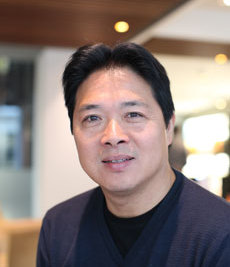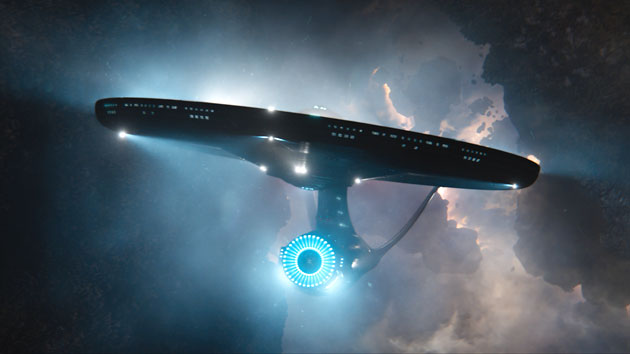
A Huge Sci-Fi Project Honoring Classical Imagery Melded with Some Big-Time Cinematic Eye Candy
With the Star Trek franchise celebrating its 50th anniversary this year, a lot was riding on getting visuals right in the newest feature film in the series — Justin Lin’s Star Trek Beyond, which debuted last month. Lin, taking over helming duties from J.J. Abrams (now producing), was coming over from the Fast & Furious franchise and was given free reign to create a more frenetic, action-oriented Trek. On the other hand, he wanted to directly reflect back visually to elements from the original Star Trek television series. This presented many challenges to VFX supervisor Peter Chiang of London facility Double Negative and his extended team, which included Double Negative, Atomic Fiction, Kelvin Optical, and a small in-house unit. Together, they had to walk a tightrope — evoking iconic imagery from an earlier era while still building modern, high-resolution, high dynamic range shots for modern cinema screens that would be believable, serve the narrative, and wow film-goers across the spectrum.
The result was 1,450 visual effects shots in the final cut, an accomplishment that Chiang calls “one of the highlights of my career.” During a recent conversation for Studio’s Podcasts from the Front Line series, Chiang explained to contributor Michael Goldman that the theme of the new movie emphasizes the “vulnerability and separation” of the legendary Enterprise crew in deep space when the agenda of an angry villain named Krall (Idris Elba) crashes the ship and maroons them far from any help. Lin wanted the iconic starship itself, which is featured prominently, to resemble its vintage design for exterior shots before, during, and after a brutal attack by Krall’s forces.
“We knew we were inheriting a fantastic legacy, and [we analyzed] all the fine work that had been done in the past on all the Star Trek films,” Chiang explains. “But Justin knew there were certain things he wanted to do different. For instance, right from the outset, we knew that we would show angles [differently] on the Enterprise. He wanted to present new points of view that audiences had not seen before. So we found ourselves moving around an inherited [digital] model [of the ship] from ILM, from the [earlier movie Star Trek Into Darkness], a fantastic model, but we slightly altered it according to the narrative he wanted. We decided to make the nacelle [engine housing] stems a little bit thinner, the neck a little bit thinner, hearkening back to the 1966 version, where you get a spindly neck and spindly nacelle stems.”
Chiang goes on to describe the reasons behind the reimagining and redesign of such iconic effects as the transporter beams and the Enterprise’s warp drive, as well as discussing the movie’s biggest set piece — the vicious attack on the Enterprise by Krall’s so-called “swarm ships.” He also discussed the fact that Star Trek Beyond is the first Star Trek movie shot digitally — primarily with Arri Alexa XT camera systems — in combination with a variety of anamorphic lensing systems, and how the visual effects’ process was impacted by those decisions. He also identifies some advantages his team gained through the production’s extensive use of LED lighting technology and corresponding lighting-control systems.
To hear the full conversation about the many challenges involved with Star Trek Beyond's visual effects, watch the video below or right-click here to download an audio-only version.
Sections: Creativity
Topics: Podcast Podcasts from the Front Lines Project/Case study VFX peter chiang podcasts VFX vfx supervision
Did you enjoy this article? Sign up to receive the StudioDaily Fix eletter containing the latest stories, including news, videos, interviews, reviews and more.

Leave a Reply